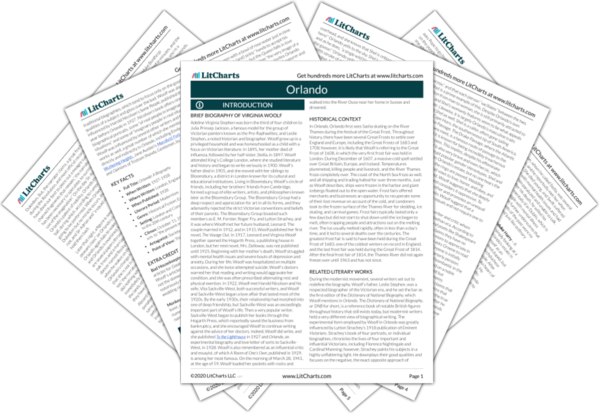Adeline Virginia Stephen was born the third of four children to Julia Prinsep Jackson, a famous model for the group of Victorian painters known as the Pre-Raphaelites, and Leslie Stephen, a noted historian and biographer. Woolf grew up in a privileged household and was homeschooled as a child with a focus on Victorian literature. In 1895, her mother died of influenza, followed by her half-sister, Stella, in 1897. Woolf attended King’s College London, where she studied literature and history and began to write seriously in 1900. Woolf’s father died in 1905, and she moved with her siblings to Bloomsbury, a district in London known for its cultural and educational institutions. Living in Bloomsbury, Woolf’s circle of friends, including her brothers’ friends from Cambridge, formed a group of elite writers, artists, and philosophers known later as the Bloomsbury Group. The Bloomsbury Group had a deep respect and appreciation for art in all its forms, and they adamantly rejected the strict Victorian conventions and beliefs of their parents. The Bloomsbury Group boasted such members as E. M. Forster, Roger Fry, and Lytton Strachey, and it was where Woolf met her future husband, Leonard. The couple married in 1912, and in 1915, Woolf published her first novel,
The Voyage Out. In 1917, Leonard and Virginia Woolf together opened the Hogarth Press, a publishing house in London, but her next novel,
Mrs. Dalloway, was not published until 1925. Beginning with her mother’s death, Woolf struggled with mental health issues and severe bouts of depression and anxiety. During her life, Woolf was hospitalized on multiple occasions, and she twice attempted suicide. Woolf’s doctors warned her that reading and writing would aggravate her condition, and she was often prescribed alternating rest and physical exertion. In 1922, Woolf met Harold Nicolson and his wife, Vita Sackville-West, both successful writers, and Woolf and Sackville-West began a love affair that lasted most of the 1920s. By the early 1930s, their relationship had morphed into one of deep friendship, but Sackville-West was an exceedingly important part of Woolf’s life. Then a very popular writer, Sackville-West began to publish her books through the Hogarth Press, which reportedly saved the business from bankruptcy, and she encouraged Woolf to continue writing against the advice of her doctors. Indeed, Woolf did write, and she published
To the Lighthouse in 1927 and
Orlando, an experimental biography and love letter of sorts to Sackville-West, in 1928. Woolf is also remembered as an influential critic and essayist, of which
A Room of One’s Own, published in 1929, is among her most famous. On the morning of March 28, 1941, at the age of 59, Woolf loaded her pockets with rocks and walked into the River Ouse near her home in Sussex and drowned.
